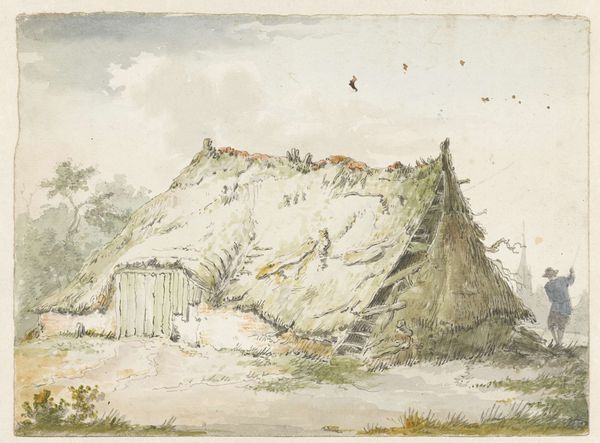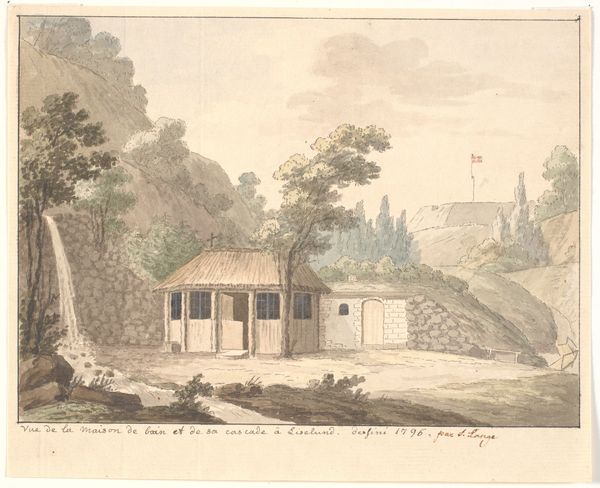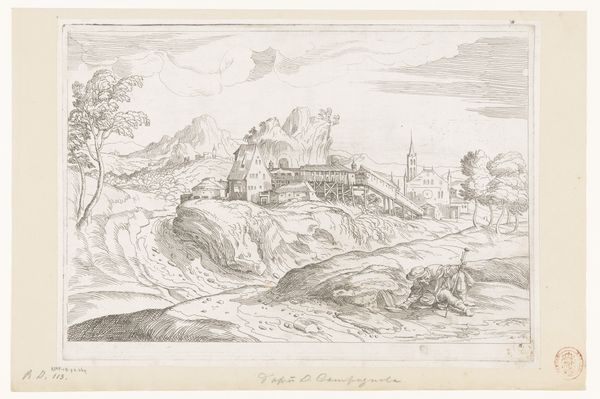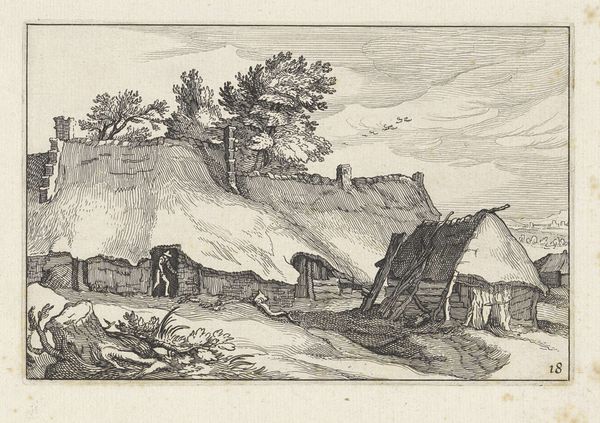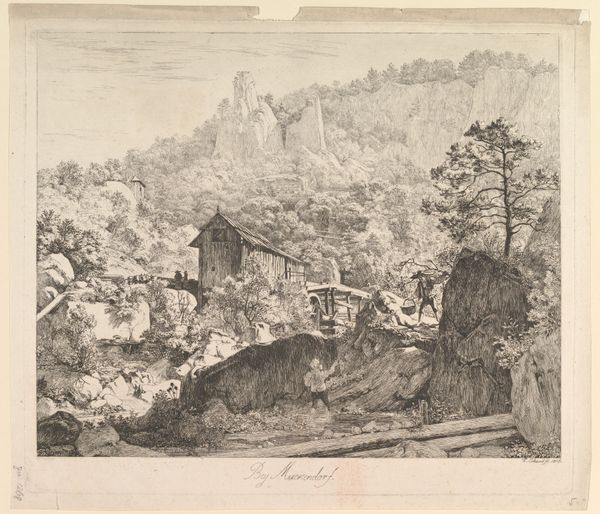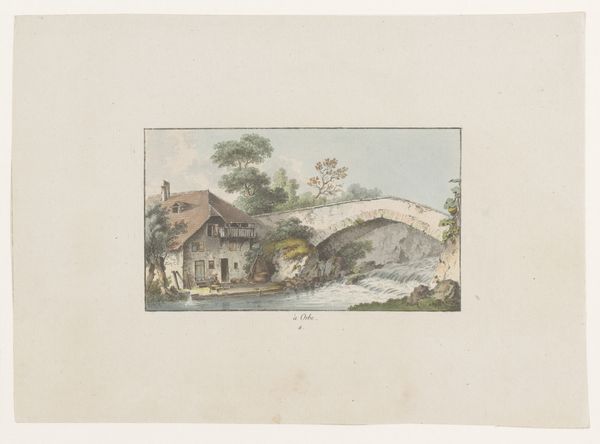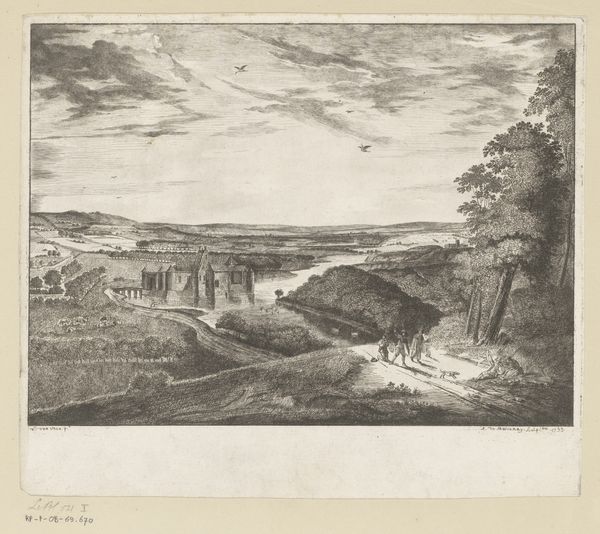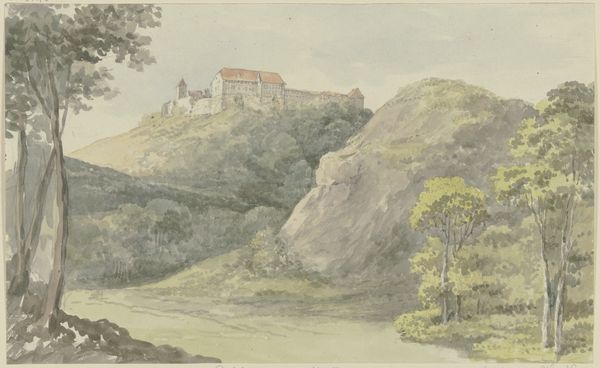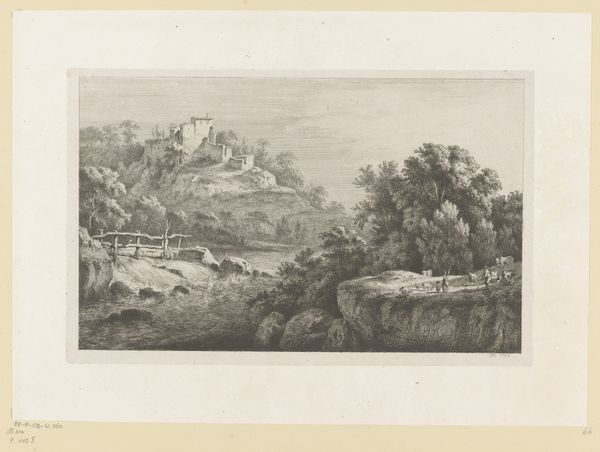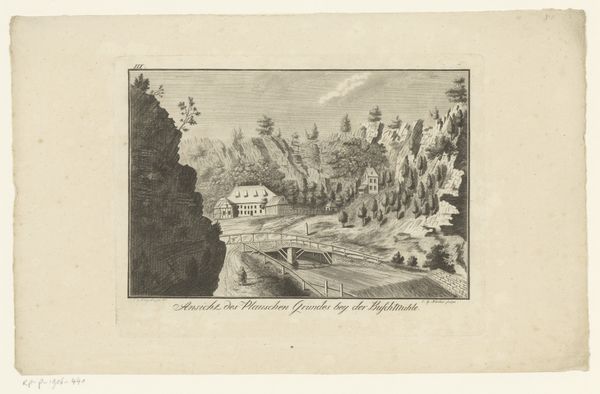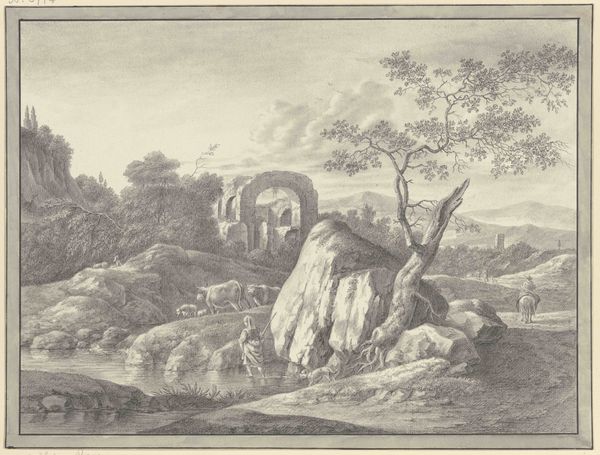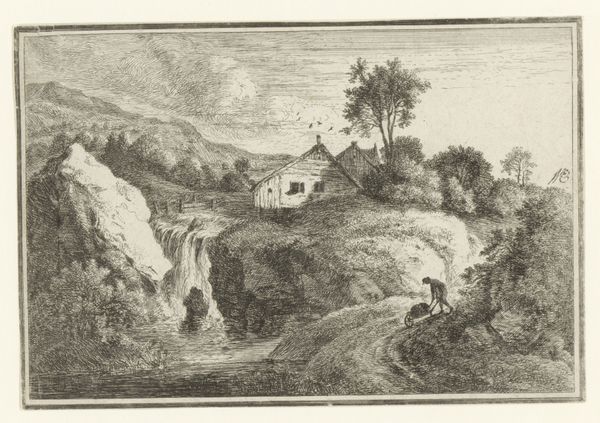
Adam's Berg (Mulkirigala), Entrance to the Image Rooms Hewn into the Rocks Possibly 1785
0:00
0:00
drawing, watercolor
#
drawing
#
asian-art
#
landscape
#
watercolor
#
watercolour illustration
Dimensions: height 263 mm, width 388 mm
Copyright: Rijks Museum: Open Domain
Jan Brandes made this watercolor painting of a temple in Ceylon, now Sri Lanka, sometime in the late 18th century. Brandes, though Dutch, was an employee of the British East India Company. That simple fact opens up a lot to consider, as you look closely at the image. The materials themselves – paper and watercolor – were easily portable, perfect for the needs of a traveler. But the scene he depicts is anything but simple. Brandes has shown us how the temple is integrated directly into the landscape, with the ‘image rooms’ literally hewn from the living rock. Note the marks of labor on the stone retaining wall and on the buildings themselves, and how human construction seems to emerge organically from the earth. Brandes was, in effect, documenting a colonial encounter, and doing so in a way that subtly acknowledges the deep integration of culture and nature. He’s suggesting that this place has an integrity all its own, one that predates and exceeds the ambitions of any trading company.
Comments
No comments
Be the first to comment and join the conversation on the ultimate creative platform.
